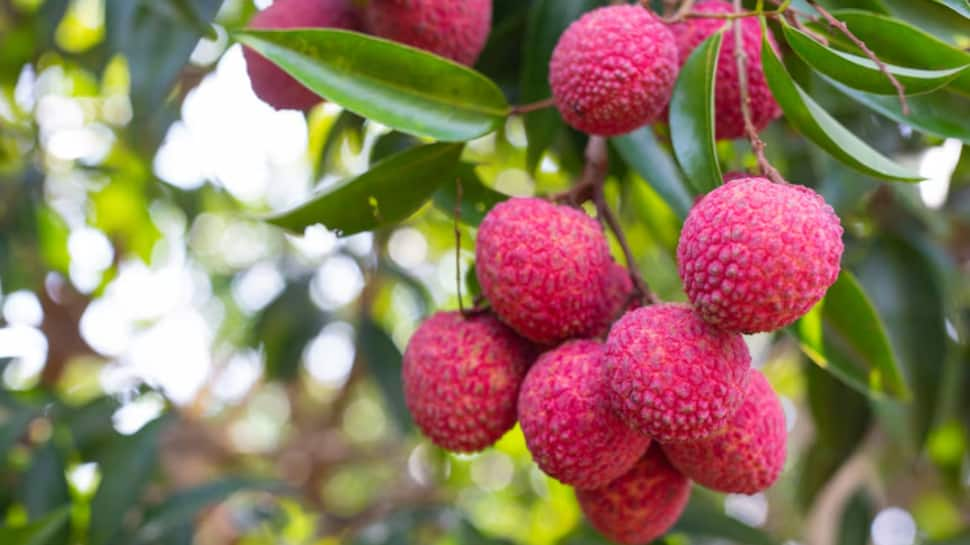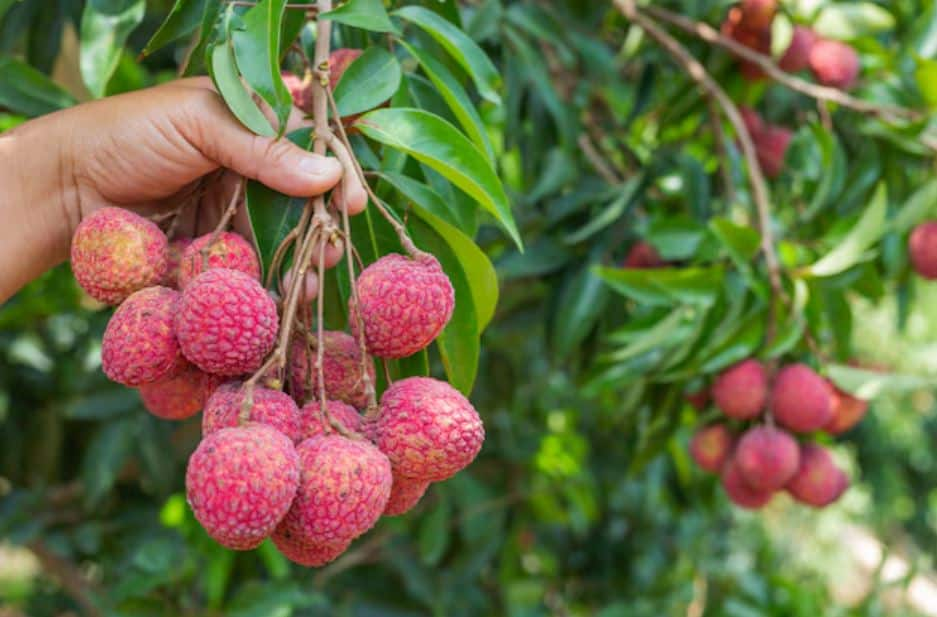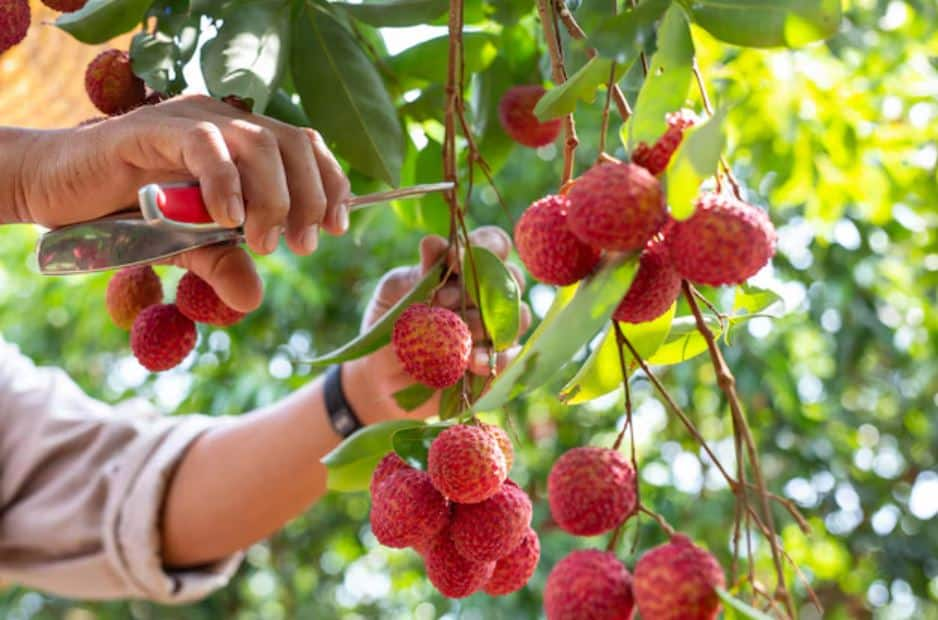Summer is the season of juicy, delicious litchis, but the sweet taste can sometimes come at a bitter cost. With rising consumer demand, some sellers resort to artificially colouring or chemically treating litchis to enhance their appearance and shelf life. These fake litchis might look attractive, but can harm your health, carrying synthetic dyes, wax, or preservatives. That’s why it’s more important than ever to know how to distinguish the real from the fake — and the good news is, you can do it easily at home.
1. Check the Colour: Real Litchis Aren’t Perfectly Red
Natural litchis have a slightly uneven skin tone. You’ll often see a mix of red, pink, green, and brown shades on the surface. If your litchis appear unnaturally bright, uniformly red, or overly glossy, there’s a high chance they’ve been coloured artificially to attract buyers. Real litchis are never neon or deep red all over.
2. Feel the Surface: It Should Be Rough, Not Slippery
Authentic litchis have a coarse, textured peel with bumps and a somewhat leathery feel. If the fruit feels suspiciously smooth, waxy, or slippery when you touch it, it might be coated in wax or oil to create a fresh look — a common trick in fruit adulteration.

3. Try the Water Test: Let Science Speak
Drop a few litchis into a bowl of clean water. Real, naturally ripened litchis will either sink or float without changing the water’s colour. If the water begins to turn reddish or pinkish, or if the fruits float oddly, it could indicate the use of external dyes or chemicals.
4. Smell the Fruit: Chemical Odours Are a Red Flag
Fresh litchis have a mild, fruity, sweet aroma. If the litchi smells pungent, chemical-like, or off-putting, it’s a strong indicator of chemical exposure. Artificially treated litchis may carry the scent of paint, kerosene, or synthetic preservatives — all of which are harmful if ingested.

5. Cut and Observe: What’s Inside Matters
Slice the litchi open and observe the flesh. The inside of a real litchi will be white, translucent, juicy, and fragrant. If the pulp has a reddish tint or is dry and discoloured, the fruit may have been exposed to dyes or other artificial substances. Also, avoid fruits that seem unnaturally firm or rubbery inside.
6. Rub Test with Cotton or Tissue: Easy and Quick
Take a wet tissue or cotton ball and gently rub the peel of the litchi. The fruit is likely to be coated with synthetic colouring if color comes off on the tissue. This simple method can help you identify fake litchis before consumption, especially if you’ve bought them in bulk.

7. Watch Out for Off-Season Litchis
Litchis naturally grow during the summer months, typically May to July in India. If you spot litchis in the off-season, they are more likely to have been stored with chemicals or artificially ripened. Always try to buy seasonal produce — it’s safer, tastier, and more nutritious.
8. Buy from Trusted Sources and Stay Informed
The safest way to avoid fake litchis is to buy from reputed fruit vendors, local farmers’ markets, or certified organic sellers. Trusted sources are less likely to use unsafe practices. Also, stay updated on food safety alerts in your area, and don’t hesitate to raise awareness among friends and family.
Choose Safety with Every Bite
Litchis are a delightful treat, but like all foods, they should be consumed with caution when there’s a risk of adulteration. These simple checks and tests can help you ensure you’re eating fresh, natural litchis free from harmful chemicals. Protecting your family’s health begins with what you bring home from the market — and knowledge is your first defence.

